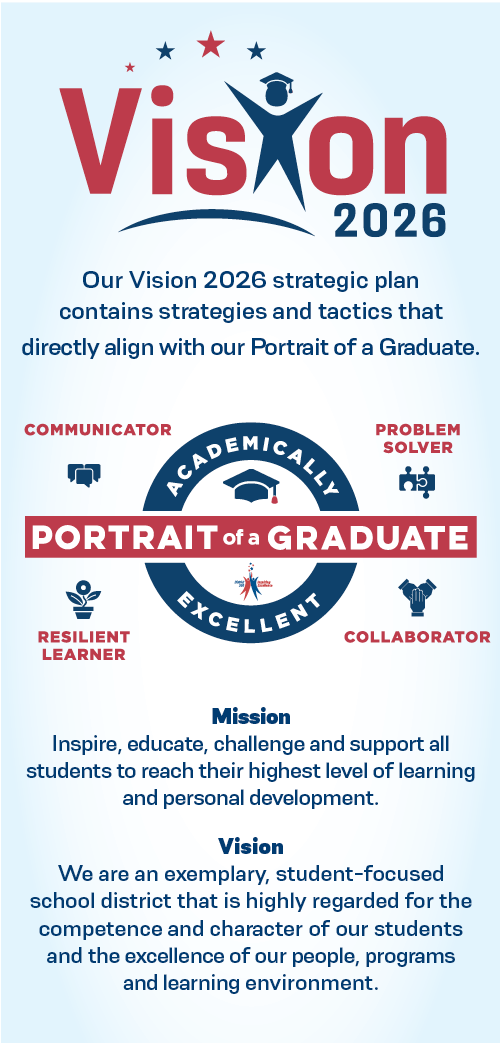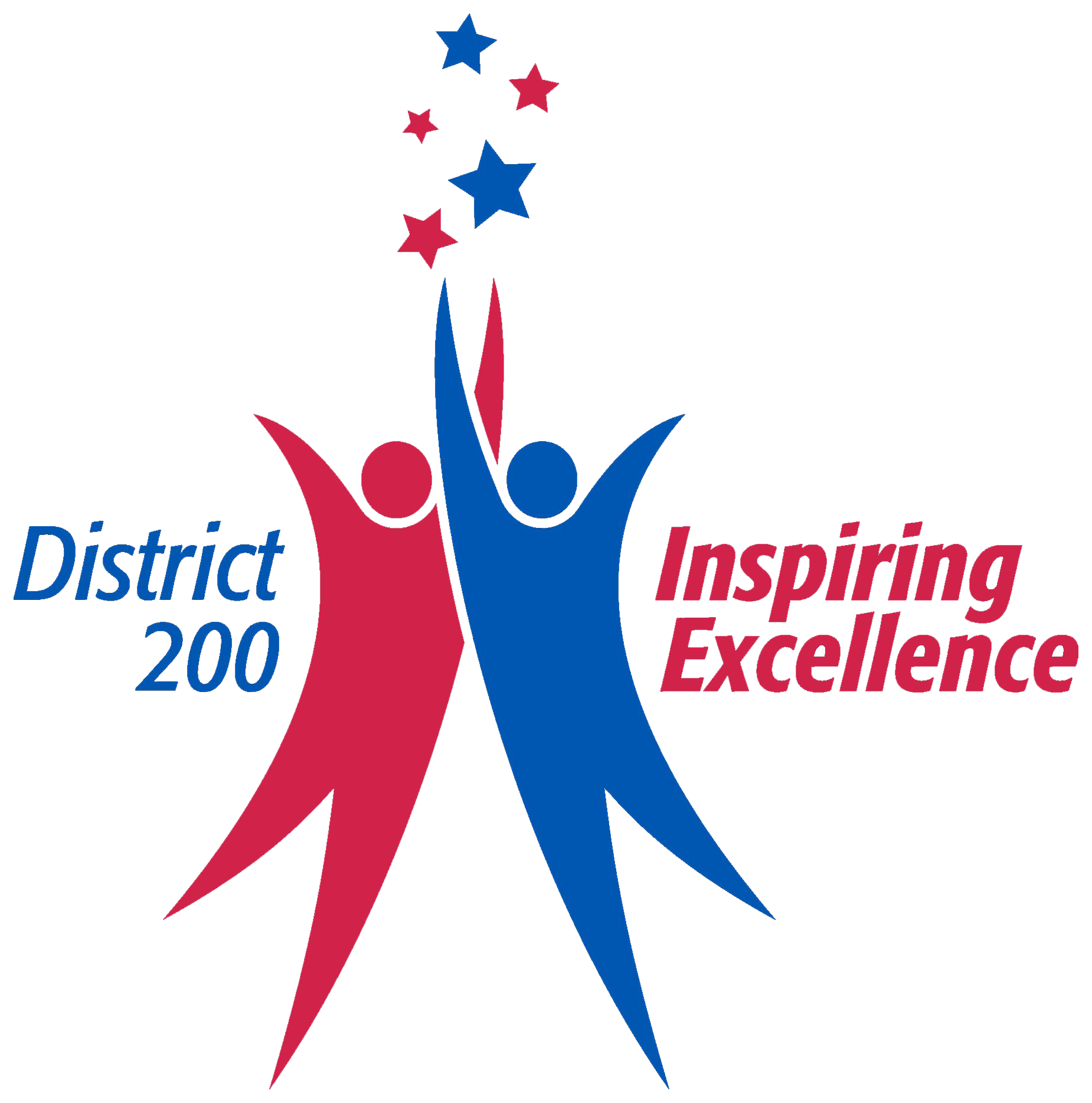Vision 2026
Academic Excellence Strategies
Implement learning acceleration strategies and programming.
Adopt and support the implementation of resources in K-8 core academic areas (math, ELA, science and social studies) that ensure high-quality instruction for all learners.
Identify the roles digital tools and a 1:1 environment have in supporting learning acceleration.
Design and implement a balanced assessment system.
Implement effective monitoring and assessment tools to measure progress for academics and social emotional needs of students.
Leverage data through an equity lens to improve learning for all students.
Identify the role technology plays in implementing a balanced assessment system.
Develop implementation resources aligned with our Portrait of a Graduate.
Identify competencies, benchmarks, and instructional guidance for each descriptor - collaborator, communicator, problem-solver, resilient learner.
Identify digital tools that are aligned to support each descriptor.
Identify how an innovative 1:1 environment can create opportunities for students to increase their exposure to each descriptor.
Expand programming to prepare students for a full range of post-secondary opportunities.
Expand dual credit opportunities and Transitional Math and English courses.
Elevate the number and diversity of students participating in early college coursework through a systematic recruiting process.
Develop an extensive Career Pathways Program including expanded opportunities, endorsements, a review of graduation requirements, and a review of middle school electives to align with Career Pathways.
Increase the number of blended learning offerings at both high schools.
Develop a comprehensive professional learning program and support system for staff.
Create a vision for instructional coaching.
Review the coaching program and staffing at all levels.
Recognize and plan for professional learning within all academic excellence and social emotional learning strategies.
Develop a professional learning program to support new staff members.
Support the social and emotional needs of students.
Ensure school connectedness for all students through clubs, activities, co-curricular programming, and relationship mapping strategies.
Implement social emotional learning (SEL) programming aligned with our SEL framework components of emotional wellness, behavior wellness, learning, relationships, and mindset.
Utilize assessment and screening data to differentiate support for students based upon need.

Operational Excellence Strategies
Address facilities projects identified in the Facilities Master Plan.
Develop a plan for adding more innovative and flexible spaces for learning that align with the Portrait of a Graduate.
Develop a plan to address facility needs at 3 of the 4 middle schools.
Implement a capital facilities improvement plan consistent with the Sherman Dergis policy.
Implement an elementary playground replacement plan.
Develop and implement a Library Learning Center renovation plan at all levels.
Maintain strong fiscal health of the organization.
Maintain a balanced budget on an annual basis.
Align financial and human resources to the strategic plan.
Maintain District performance in key financial metric areas.
Ensure all District contracts meet financial, operational, and academic strategies.
Develop and maintain robust technology systems.
Annually assess the stability and security of District technology systems.
Regularly evaluate digital tools and subscriptions to ensure they are meeting the needs of the school system and are aligned with strategic work.
Ensure comprehensive data systems are accessible and usable for staff.
Engage our community on an ongoing basis to determine its priorities, foster partnerships, and promote learning.
Continuously engage all stakeholders by communicating important updates.
Provide the community with a “window” into schools by utilizing the voices of our students.
Maintain active engagement with all of our municipalities and key community partners.
Conduct a communications audit to ensure that all District 200 stakeholders are being informed and engaged.
Hire, develop and retain diverse, high-quality staff.
Actively recruit a diverse pool of candidates.
Maintain competitive wages.
Proactively address staff shortage and workforce needs.
Implement a “Grow your Own” teacher career pathway.
Actively support dual credit certification for secondary teachers.
Maintain and enhance a positive organizational culture.
Regularly monitor the 5 Essentials Survey satisfaction feedback and plan accordingly.
Work collaboratively with first responders and community partners through the Safety Committee to update and enhance our school safety protocols.
Regularly conduct an employee morale and engagement survey to ensure a continuous improvement cycle.
